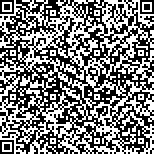下载中心
优秀审稿专家
优秀论文
相关链接
摘要

高分四号(GF-4)是国家高分辨率对地观测系统重大专项天基系统中的一颗地球同步卫星,为探索GF-4号卫星在大面积干旱监测中的应用,本文对该卫星在快速监测大面积干旱方面的应用能力进行了初步探讨。以2016年内蒙古自治区巴林左旗和巴林右旗地区严重旱灾为例,利用NDVI差值对该区域的干旱情况进行了监测,并与MODIS NDVI产品进行对比分析,得到了研究区内2016年干旱分布情况,结果表明其总体趋势与MODIS NDVI产品一致,且细节信息更加丰富。本文主要是GF-4卫星数据结合GF-1卫星数据对内蒙部分干旱区域进行监测和分析,体现了国产高分辨率卫星数据,尤其是GF-4卫星数据,对提高中国突发灾害的应对能力具有重要意义。
GF-4 is a geostationary satellite in the significant special space-based system of the National High-Resolution Earth Observation System. The GF-4 satellite has visible and mid-infrared bands with resolutions of 50 and 400 m, respectively. The satellite can be used to observe China and its surrounding areas and obtain patterns from continuous observation of areas with a width of 400 km by command control and with a revisit period of up to 20 s. The GF-4 satellite possesses higher spatial and temporal resolutions and achieves a more detailed observation of the Earth's surface compared with MODIS sensors. Since the beginning of summer in 2016, Inner Mongolia, the study area, has been experiencing continuous high temperatures and rare rainfall, with its precipitation in early August being less than 10 mm, which is 80% to 100% less than normal and the lowest recorded value in history. The application of the GF-4 satellite in the rapid monitoring of large-area drought was discussed in this study.
The degree of drought in the study area was evaluated. According to the collected data, no large-scale drought occurred in Inner Mongolia in 2013. During this period, vegetation grew well, and this growth was close to that in a normal year. The severe drought that occurred in Bahrain Zuoqi and Bahrain Youqi areas in Inner Mongolia Autonomous Region in 2016 was regarded as an example, and GF-4 and GF-1 data on August 14, 2016, and GF-1 data on August 10, 2013, were selected. First, the NDVI of images was calculated. Second, a quantitative analysis of GF-4 and GF-1 NDVI was conducted, and the transformation equation was obtained to eliminate the difference between different sensors. Third, the difference between the converted NDVI and normal-year GF-1 NDVI was calculated and compared with the drought distribution through the MODIS anomaly vegetation index in the same period. Finally, the drought distribution and drought degree of NDVI were analyzed.
Linear transformation of the NDVI values of GF-1 and GF-4 sensors was conducted using a linear equation. According to the drought distribution in the study area in 2016, severe-drought areas were mainly distributed in the northwest part of the study area and partly distributed in the central plains. Among the drought areas, grassland was the most severe. The northeastern plains of cultivated land looked pale blue. Growth was slightly better than that in 2013, and the disaster situation was unobvious. The drought distribution trend of the GF-4 images was consistent with the drought distribution trend of MODIS NDVI, and the extent of the disaster was approximately similar.
GF-4 satellite data were combined with GF-1 satellite data to monitor and analyze several arid regions in Inner Mongolia. Results show that GF-4 satellite data can be utilized to observe large areas. The satellite allows for long-term continuous observation of a region, provides real-time and continuous massive data for drought monitoring, and is important in improving emergency response capabilities.

